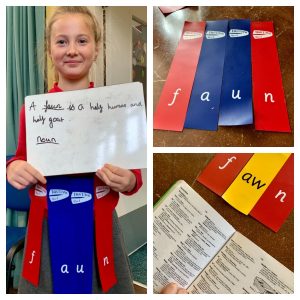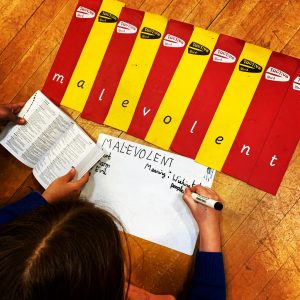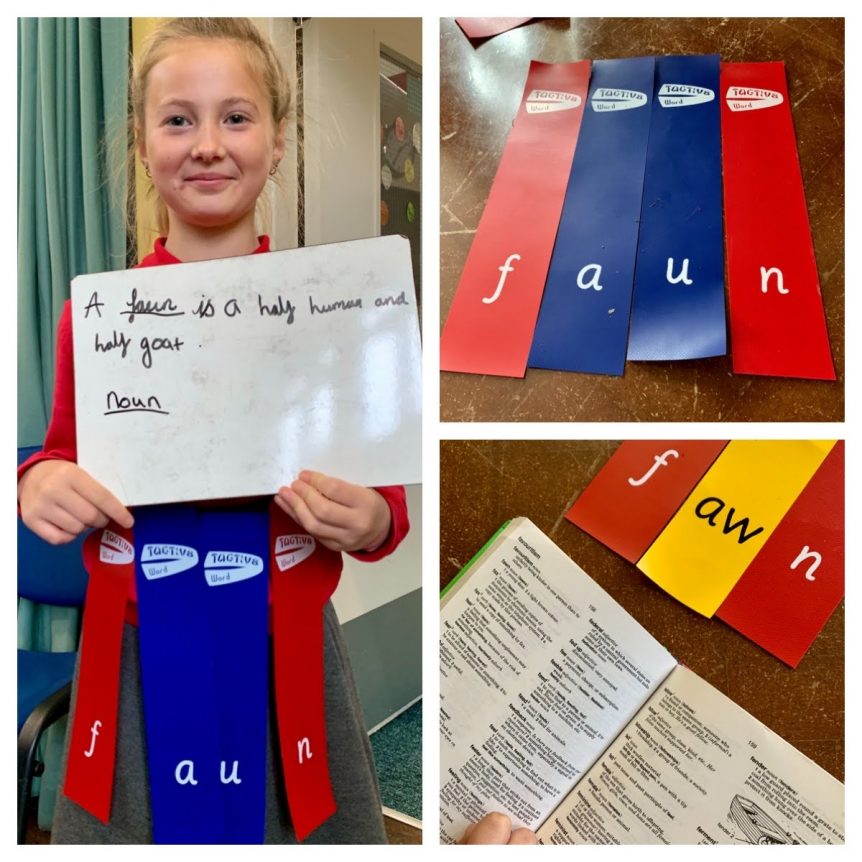How challenging has this term been – for families, communities and businesses alike? As to schools, our thoughts go out to school leaders, teachers, support staff and of course – the children. This week, Ofsted published their findings from their October visits. As one head teacher tweeted: “But why are we surprised at this? School leaders, teachers and parents are well aware of this and doing everything in their power to help children get back on track.”
And we couldn’t agree more.
Many schools and academy trusts have blocked external organisations from working with them. Luckily, there are some pioneering schools out there who recognise the importance and impact of our Physically Active Learning (PAL) approaches. It seems that some of them read these blog posts:
- Helping Schools Re-Open More Widely with Physical & Social Distancing
- Working & Playing with Parklands Primary School
The latter included positive tweets from the irrepressible school leader, Chris Dyson and his incredible team at Parklands Primary School. Weekly sessions with different bubbles have allowed us to consider continuity and progression – as well as create and pilot new activities. Who knew Dodgeball Tag would be so much fun!
In addition to our weekly sessions with Parklands, we were invited to share the love of moving and learning with schools in London, Wiltshire and Worcestershire – as well as schools nearer to home in Yorkshire. Planning and risk assessments are always carefully thought out. However, this term, our problem solving skills have been well and truly tested. Needless to say, most of the sessions for children have taken place outdoors – as well as the after-school CPD sessions for teachers. As to bubbles and cleaning the resources, we owe Dettol and Milton a massive ‘Thank You’.
What do Ofsted Say?
The Ofsted Report includes the statement, “…some have lost physical fitness…”
Many teacher friends – both here in the UK and across the globe – realised this as soon as schools started returning. That said, we are not sure about the political correctness of a certain comment: “The fit have become fitter – while the fat have become fatter.” Sadly, some schools have chosen to widen this gap by pursuing a narrow catch up curriculum – at the expense of PE, Sport and Physical Activity. Cue much gnashing of teeth and muttering. Yes, we need to support children who have missed out on various building blocks. The gulf between the ‘Haves’ and the ‘Have Nots’ has become wider during Lockdown 1.0. However, crash diets do not work. We still need to consider the long-term trajectory if we are to change behaviours and attitudes.
Ofsted’s reference to “losing stamina in reading and writing” is an interesting one – and we can see the rationale. But again, we need to think long term. In the words of Simon Smith, Head Teacher at East Whitby Academy:
 Cue a series of joining dots and thinking. Maybe, now is the time for the Department for Education and Ofsted to actively encourage schools to consider Tagtiv8’s Physically Active Learning solutions? Perhaps both organisations could consider the growing body of evidence from across the globe, as well as the initial research into the Tagtiv8 Maths programme by Dr Andy Daly-Smith.
Cue a series of joining dots and thinking. Maybe, now is the time for the Department for Education and Ofsted to actively encourage schools to consider Tagtiv8’s Physically Active Learning solutions? Perhaps both organisations could consider the growing body of evidence from across the globe, as well as the initial research into the Tagtiv8 Maths programme by Dr Andy Daly-Smith.
Physical Fitness AND Stamina in Reading & Writing
This half term, we have been working with a middle school in Worcestershire – looking towards ways to develop Tagtiv8 comprehension activities for an intervention group. The school uses the innovative PiXL partnership to identify gaps. One of the areas of concern is their children’s difficulty to make inferences.
We approached Philip Webb – our Go To Guru for all things English. Again, we were not disappointed. We originally created Tagtiv8 Word as a programme for Spelling, Punctuation and Grammar – whether it be Active SPaG or GPS. In Philip’s words:
“I think Tagtiv8 resources are best targeted at a big barrier to comprehension, which is lack of vocabulary.”
Working with Philip and referencing the research of Isabel L. Beck, Professor Emerita of Education in the School of Education at the University of Pittsburgh, we believe we now have something very special indeed.


By combining Physical and Thinking Challenges, we can now deliver Tagtiv8’s own version of the 11 Step Model:
- Select the word(s).
- Contextualise the word within the story or text.
- Highlight & make the word(s).
- Say the word – repeat it in different ways.
- Provide a child-friendly explanation (definition) of the word.
- Give other examples. Explain & provide examples of multiple meanings and clarify misconceptions.
- Relate the word(s) to children’s own experiences.
- Engage with the word(s) in other ways.
- Explore – etymology, synonyms and antonyms. Consider strategies to remember the word(s).
- Record the word(s).
- Consolidate – use the word(s) in different contexts and begin to use it/them across the curriculum.
Not only that, but we are able to help teachers help children understand the 3 tiers of words:
- Everyday basic words that usually occur in conversation
- Abstract words that often occur in written texts
- Very specific topic vocabulary-based
Reading Backwards and Forwards
If you would like to explore further research into vocabulary instruction – whether it be implicit or explicit – check out these 2015 field notes from Doug Lemov:
If you are a teacher or a school leader, part of Ofsted or the DfE, and would like to talk further, drop us an email at hello@tagtiv8.com or call us on (44) 20 3370 4272.

